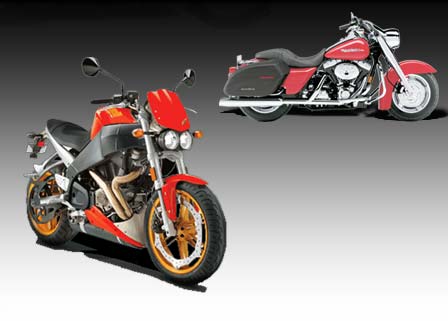March 28, 2005
Memphis, TN - Exhibition explores the motorcycle as cultural icon, design object & technical achievement.
From April 22 to October 30, 2005, WONDERS will present The Art of the Motorcycle.
Nearly 100 motorcycles will be on view at The Pyramid, North Entrance. The exhibition will feature some of the most important motorcycles of the last 125 years, selected for their design excellence, cultural impact, and technological innovation. Starting as bicycles with motors attached, motorcycles have developed into cultural icons symbolizing the best of industrial design blended with dreams of freedom, romance and danger.
The Art of the Motorcycle was originally conceived and curated by Thomas Krens, Director of the Solomon R. Guggenheim Foundation, in association with Charles Falco and Ultan Guilfoyle. Its presentation at the Solomon R. Guggenheim Museum in 1998 broke all the museum�s past attendance records.
The Memphis presentation is curated by Ed Youngblood of the American Motorcyclist Association and Pete Gagan, founder of the Canadian Vintage Motorcycle Group.
The exhibition�s organization is chronological with each section having a distinct cultural and historical component.
The first section, �Inventing the Motorcycle: 1868-1919,� considers the motorcycle in the context of the era: one in which inventions changing notions of speed, time and space such as the railroad, electricity and cinema preoccupied the public imagination. Featured motorcycles include the 1894 steam-powered Copeland (replica), 1903 Indian Single, 1911 Harley-Davidson Single and 1912 Indian 8-Valve Board Track Runner.
�The Machine Age: 1922-1929� traces the rapid acceptance of a machine aesthetic, the fascination with technology serving as a leitmotif of modern culture. Featured motorcycles include the 1923 BMW R32, 1928 Harley-Davidson 8-Valve Board Track Racer, and1929 Scott Flying Squirrel.
�New World Orders: 1930-1944� finds the machine ethos of the 1920s assuming an altogether different scale and demeanor. Featured motorcycles include a 1933 Ariel Square Four, 1936 Harley-Davidson EL Knucklehead, 1941 Zundapp KS600 with Sidecar (German Military), and 1944 Harley-Davidson Military 42 WLA.
�Freedom and Postwar Mobility: 1946-1958� charts the emergence of the motorcycle as an instrument that allowed for escape from the anonymity of postwar society. Featured motorcycles include a 1950 Triumph Thunderbird, 1951 Indian �Rainbow� Chief, and 1957 Moto Guzzi V8 Works.
�Popular Culture/Counterculture: 1960-1969� examines the motorcycle as an emblem of the era, as relevant to the cultural iconography as rock music and street protests. Featured motorcycles include a 1960 Honda CB92 Benly Super Sport, 1962 Norton Manx, and 1967 Triumph T120 Bonneville.
�Getting Away From It All: 1969-1978� charts the nation�s growing malaise and corresponding desire for escape. Featured motorcycles include the 1969 Harley-Davidson �Captain America� Chopper from the film �Easy Rider,� 1973 Penton Jackpiner, and 1977 Honda Goldwing GL1000.
�The Consumer Years: 1982-1989� tells the story of a rising stock market and burgeoning middle class, making leisure activities ever more eagerly pursued. Featured motorcycles include a 1984 Kawasaki GP Z900R Ninja, 1988 Norton Wankel Rotary, and 1989 Buell RS1200.
Finally, �Retro/Revolutionary: 1993-Present� traces the different routes recently taken in motorcycle design from the stripped grunge aesthetic to highly individual designer machines. Featured motorcycles include a 1994 Britten V1000, 1995 Aprilla Moto 6.5, 1998 MV Augusta F4, and 2004 Honda Rune.
This exhibition is part of The Scheidt Family Series. Bumpus Harley-Davidson is the proud title sponsor of the presentation of The Art of the Motorcycle, Memphis. Additional sponsors include The Buckman Family who sponsors the educational component of the exhibition, AutoZone, The Peabody Hotel, Peabody Place, and Federal Express.
For more information call (800) 2 MEMPHIS or (901) 312-9161



